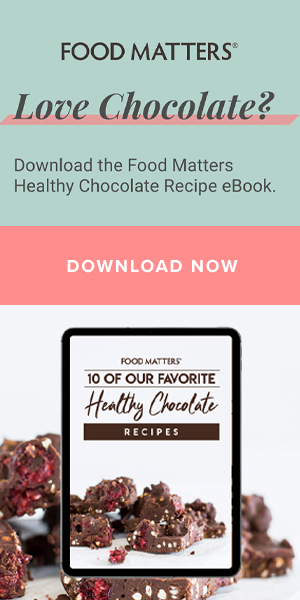Controlling Diabetes Naturally
According to the Australian Bureau of Statistics’ National Health Survey 2014-2015 the prevalence of diabetes has increased in Australia from 4.5% to 5.1% in the last three years. This is a total count of 1 million people. Are you one of them?
Are you concerned about your risk of developing diabetes-related complications such as eye, kidney, nerve and heart diseases? Do you feel tired and lethargic? Are you stressed and confused? Is traveling difficult due to set mealtimes? Would you like to manage your diabetes naturally?
You Are Not Doomed To A Life Of High Blood Sugars And Diabetic Complications
You can take control of your diabetes by taking control of your diet. The primary way to reduce blood sugar levels is through the foods you choose to eat. Tweet - You can take control of your diabetes by taking control of your diet.
A major study, The Diabetes Control and Complications Trial (DCCT) showed that keeping blood glucose levels as close to normal as possible (called intensive blood glucose control) reduces your risk of eye disease by 76%, kidney disease by 50% and nerve disease by 60%. A follow-up study, Epidemiology of Diabetes Interventions and Complications (EDIC) showed that tight glucose control reduces your risk of cardiovascular disease by 42% and heart attack and stroke are reduced by 57%.
As a type 1 diabetic myself, I understand your fears and frustrations firsthand. I have spent the last few years researching diabetes for myself and I would like to share with you what I’ve learned. This information is relevant whether your diagnosis is pre-diabetes, type 2 diabetes (T2D), type 1 diabetes (T1D) or latent autoimmune diabetes of the adult (LADA). You can dramatically improve your blood glucose control through diet, and therefore, reduce your risk of complications in future. No more lethargy - stable blood sugar levels will increase your energy. Choose from a wide range of wholefoods to enjoy each day.
Here’s The Plan! You’re Going To Do 4 Things….
- Remove processed and refined foods (sugar, flours, trans-fats) - if it was made in a plant or lab, don’t eat it!
- Reduce your consumption of grains to one serving a week of only non-gluten, whole grains such as quinoa or buckwheat
- Reduce starchy vegetables (potatoes, corn, etc.) to one or two meals per week
- Remove dairy if you do not tolerate it well, or switch from cow’s milk products to goat’s or sheep’s milk products instead. (Remember, milk contains lactose, a sugar, that will increase your blood glucose levels)
- If you tolerate dairy well and want to keep it in your diet, try to reduce it to homemade yogurt (to ensure the lactose is removed - commercial brands still potentially have lactose and added sugars), cheeses and cream
- Remove processed meats, like bologna, which contain harmful preservatives
Reduce soy products if you are vegetarian or vegan. Remove entirely if they are not well tolerated. Soy contains phytoestrogens which mimic our own estrogen and can cause hormonal imbalances.
Replace Them With Other Foods
- Wholefoods…eat them as close to how they are found in nature as possible. Vegetables, especially low glycemic ones (broccoli, leafy greens, and French beans, etc.) should make up 65-75% of your diet
- Low glycemic fruits – berries, citrus, apples and pears are best. Treat high-sugar fruits (mangos, ripe bananas, etc.) as a special treat
- Healthy fats: avocados, olives, nuts, seeds, coconut products, grass-fed animal meats, grass-fed butter and lard, ghee, olive oil, avocado oil, walnut oil. How much fat do you need at each meal? The size of your thumb. NOTE: you will feel fuller when eating more fat in your diet and will not need to snack between meals
- High-quality protein: organic eggs, organic muscle meats and organ meats, fish and crustaceans, chia, nuts, seeds, bee pollen, peas, spirulina, blue-green algae. How much protein do you need at each meal? No more than the size of the palm of your hand. NOTE: protein should be treated like a condiment. If you ingest too much protein it will be converted to carbohydrate
- Legumes, if well tolerated (soak them overnight to increase digestibility): dried and fresh beans, lentils
- Natural sweeteners: honey, dates, maple syrup. USE SPARINGLY, only as a treat!
- When baking: use coconut flour or nut flours – almond or hazelnut are great. And, if using a sweetener, reduce it by half
Restore Your Health
- Enjoy wholefood eating
- Move your body
- Get outside in the fresh air and sunlight
- Relax and reduce stress
- Build healthy relationships
- Take time for you
If you are taking medication for your diabetes, other than Metformin, you will need to work with your practitioner. If you take Metformin, you will most likely need to reduce your dose once you’ve been on this diet. For insulin-dependent diabetics, you will need to adjust your bolus insulin based on the amount of carbohydrates at each meal. You may also need to reduce your basal insulin.
The main idea here is that by reducing the amount of carbohydrates in your diet you will stabilize your blood sugar levels. By keeping blood glucose as close to the ‘normal’ range as possible, you will reduce your risk of diabetes-related complications and create a better future for yourself, your energy will increase, your mood will stabilize and you will have control over your diabetes.
Begin Today
- Start by recruiting a friend (or partner) to join you, this will keep you motivated and accountable
- Clean out your fridge and pantry
- Make a meal plan and shopping list
- Set aside time each day for yourself
- Take pleasure in making time for yourself and your health
- There’s no need to wait, make your health a priority











